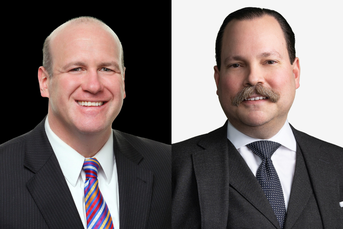Tax-loss harvesting produces bumper crop of charitable cash contributions

Cash donations represented 40% of allocations to donor-advised funds at Vanguard Charitable in the seven months ended in January, up from 29% in the same period a year earlier.
Last year’s market downturn led to a strong increase in the use of cash contributions for philanthropy, according to one of the largest organizations for charitable giving.
As stocks lost value in 2022, many investors turned to tax-loss harvesting to reduce their taxes. Many funneled the cash from their equity sales into donor-advised funds, statistics from Vanguard Charitable show. From last July through January, cash donations to DAFs represented 40% of total contributions, up from 29% in the period from July 2021 through January 2022.
While the market dropped, interest rates rose, crimping mergers and acquisitions and initial public offerings. That trend also affected charitable giving because it meant fewer illiquid, complex assets — such as an ownership stake in a private business, real estate or an art collection — were allocated to DAFs.
“In the current interest-rate environment, we’re seeing fewer complex asset opportunities,” said Mark Froehlich, chief financial officer at Vanguard Charitable, which sponsors DAFs.
In addition to tax-loss harvesting and higher interest rates, another factor contributing to higher cash donations to charity is that thanks to the 2017 tax reform law, donors can take a 60% deduction against their adjusted gross income, a higher rate than previously allowed.
“Those three things probably moved the needle toward cash contributions as opposed to in-kind contributions of either public or private assets,” said Bill Loftus, a founding partner at Coastal Bridge Advisors.
Regardless of the means by which money is accrued in a DAF, the vehicles are an increasingly popular way to make charitable contributions. More than $1.87 billion was granted by Vanguard Charitable donors in 2022, a 5% increase over 2021 and its sixth straight year of record giving.
A November report by the National Philanthropic Trust showed that DAF grant-making to charities around the world grew 60% compared to pre-pandemic 2019 and had increased 400% over the past decade.
Investors receive an upfront tax break when they put money or other assets into a DAF and then have an unlimited amount of time to make allocations to charities.
“It allows you to separate your tax decision from your giving decision,” Froehlich said.
The lack of a deadline for distributions has caused some concern among lawmakers.
A DAF also can be a key component of a “bunching strategy” for charitable donations, said Tim Steffen, director of advanced planning at Baird.
For instance, instead of making smaller charitable donations annually that don’t exceed the standard deduction, a client can allocate several years of donations to a DAF to get over that hump and achieve a tax benefit.
“It’s probably the most efficient way to manage it,” Steffen said.
If an investor has a particularly good year in the market, a DAF also can be helpful. If stocks are contributed to a DAF, a donor avoids capital gain taxes.
“It tends to be a solution that mitigates the tax bite in the year the gain takes place,” Loftus said.
Of course, DAFs are not the only game in town when it comes to charitable giving. Making a qualified charitable contribution from an individual retirement account is the philanthropic move that Brett Bernstein is seeing the most.
“It’s a more tax-efficient way to give to a charity than if you just write a check,” said Bernstein, CEO and co-founder of XML Financial Group. “A lot of clients don’t realize that you can use required minimum distributions for charitable contributions. We have to educate them.”
Now is a good time to bring up charitable contributions in talks with clients.
“Tax season is a great opportunity to discuss with your advisor your philanthropic goals,” Froehlich said. “They very often are enriching conversations.”
Learn more about reprints and licensing for this article.








